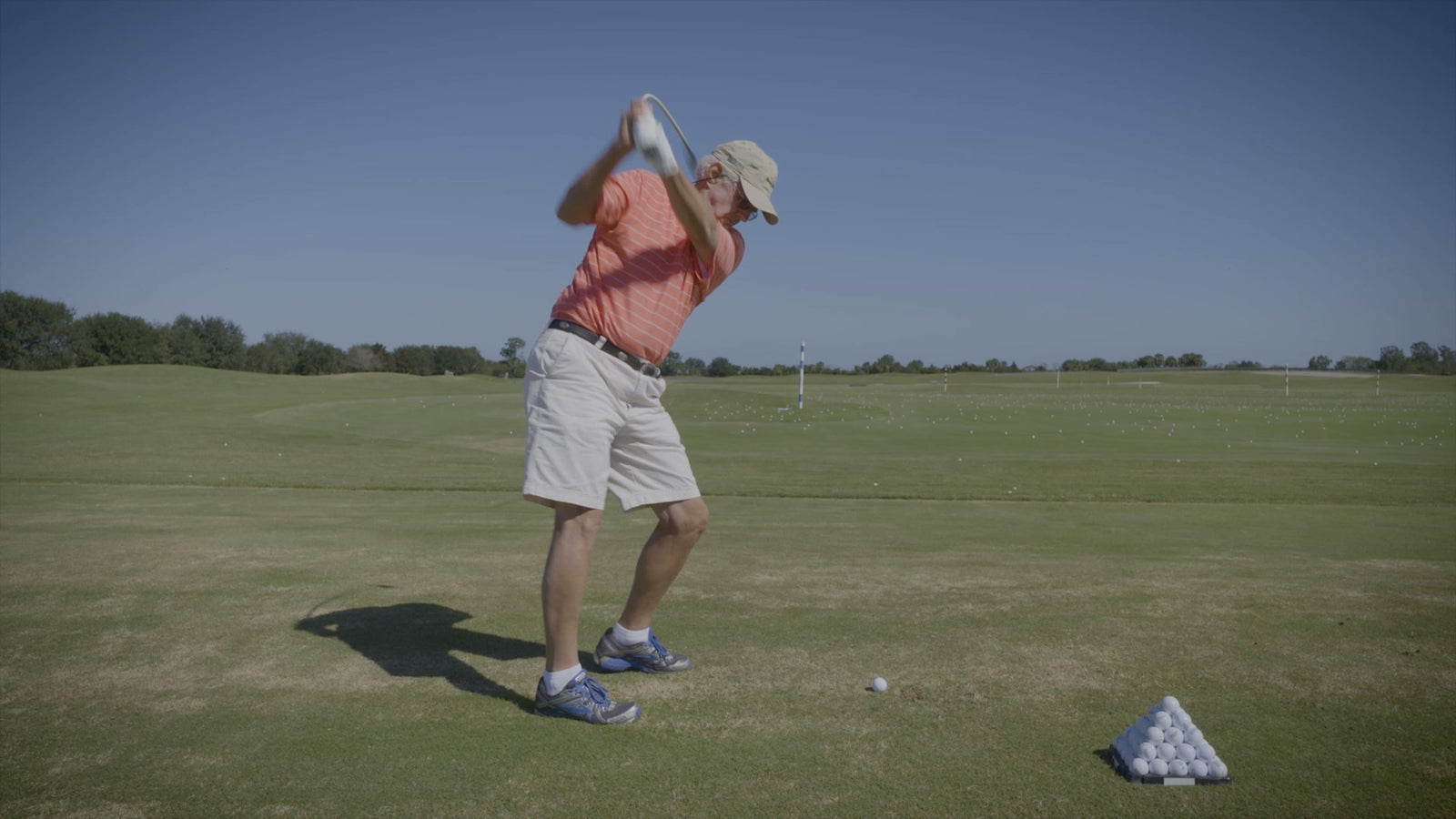GForce Preventing Over The Top Swings

GForce Swing Trainers come in a 7 iron and 54 degree wedge, the club heads are standard weight and of high quality like leading brands on the market with the exception of the shaft which is flexible. GForce Swing Trainers were invented by experienced PGA coach Stuart Small from the UK. Stuart realised there were certain elements of the golf swing that students found difficult to learn because the golf swing is reliant on feeling vs overthinking which is destructive to the swing.
With one of the most common faults in golf been an overtop swing which causes slices, Stuart found that the problem was in the transition between the backswing and downswing move that would make or break a golf swing. Coaching golfers of all abilities for the past 20 years I found a significant difference between the elite golfer Vs the mid to high handicapper in transition using the GForce Swing Trainer that wasn’t possible for the golfer to feel with a normal golf club.
Over the top swings are a result of poor sequencing. Sequencing is how we efficiently transfer energy from the ground through the body into the club head. Mid to high handicap golfers do it the opposite way round to elite golfers starting the downswing by pulling on the handle too much and too hard in transition causing the arms too move quicker than the body can turn, this steepens the shaft in the downswing making it impossible to swing from the inside resulting in an out to in swing path causing slices, pulls, chicken wing and general poor contact with no consistency or improvement.
I studied many of my students golf swings using the GForce Swing Trainer and could clearly see that pulling too hard on the handle would cause the shaft to overload in transition. This would make it impossible to square the face on impact causing shots to miss right of the target. Not only was the club swinging from out to in but the flexible shaft had too much load in it so it wouldn’t have time to unload at impact leaving the club face open. You can see in the picture this is a pulling action in transition overloading the shaft on the GForce Swing Trainer.

Looking at my elite golfers with the GForce Swing Trainer in transition you could mistake the flexible shaft for any normal golf shaft because there was very little load in the shaft compared to mid to high handicappers. This is because the elite golfer starts the downswing from the ground up, Legs, Hips, Torso, Arms, Hands. When you start from the ground up and leave the arms and club alone it helps the club shallow in transition because you are not applying and force to the handle and you don’t overload the shaft. Here is a great example of a professional in transition with the GForce Swing Trainer.

Although a lot of my elite players had a good transition the GForce Swing Trainers highlighted another fault that was common for the elite golfer. The problem I found was that players were holding on too long to the angle between the left arm and shaft (Lag) this would cause the arms to over accelerate causing last second manipulations flipping at the ball. Again this is poor sequencing not allowing the wrists to uncock would prevent the transfer of energy into the club head. The GForce Swing Trainers would highlight this fault with a ball flight to the right of the target, with the arms moving too fast this would create to much load on the shaft resulting in an open club face on impact. With the correct sequencing the arms should be slowing down as the wrists uncock transferring the energy into the club head.
How To Use
My vision was to create a training aid for all levels of golfer to self teach through a unique product capable of providing the user with instant feedback from the flight of the ball and feeling of the swing. This would make practice sessions more productive allowing the learning curves to be slashed in comparison to modern training aids and teaching methods. Eliminating all those destructive swing thoughts and turning them into feelings clearing your mind so you can get on with improving your scores.
The shaft lets you know if its right or wrong.
Drill No. 1 Learn to Rotate
Good rotation is key for generating club head speed and consistent connection. Why? Rotation creates a force called Centrifugal Force this is what tour players use to create effortless speed. Also good rotation keeps you centred throughout the swing making contact more consistent and predictable. Practice in front of a mirror arms crossed with a club across your shoulders and turn into your backswing making sure the grip end of the club points directly at you in the mirror. Get the feeling of pulling your right hip back, into the backswing as this will prevent swaying and help you turn more which is a big problem for golfers.
Drill No. 2 Continual Swing – Half Swing
Once you have mastered the turn, take your grip and posture with the GForce Swing Trainer swinging back and forth making half swings, focus on turning your body out of the way on the backswing and downswing so the arms and club can swing back and forth freely and uninterrupted like a pendulum maintaining tension in the shaft making sure you don’t overload it. If you don’t turn out of the way your body gets in the way of the arms which will wrap around your body AKA Chicken Wing, this causes the shaft to loose tension which is not good.
Drill No. 3 Continual Swing – Full Swing
Now you have mastered the half swing try completing a full swing. The crucial part is the transition from the end of the back swing and beginning of the downswing. Try leaving the arms and club alone and start rotating from the hips first which will shallow the shaft in transition without overloading the shaft. The smoother you can get the transition the better the sequencing will be improving swing path, club head speed, contact and consistency.
Drill No.4 Slowing Arms Down – Unloading Shaft
When you have mastered drills 1, 2 & 3 you still may experience shots to the right of the target. This is a result of the shaft not unloading so the face is aiming right of target on impact. Unloading the shaft is a sign of sound swing mechanics because it will accelerate the clubhead and square the clubface. With the correct sequencing in the golf swing as one segment slows down another speeds up, so as the hips slow down the torso speeds up, as the torso slows down the arms speed up, as the arms slow down the club speeds up. If the arms don’t slow down the shaft wont unload so the swing is inefficient. To get a feeling of unloading the shaft and transferring the energy to the club head make some half swings without a ball and stop your hands when they line up with your left leg. You will see and feel the shaft unloading, you will also notice the white line on the bottom groove of the clubface square up. Try hitting some half shots feeling the hands and arms slowing down and gradually work towards a full swing for improved sequencing.
Conclusion
GForce Swing Trainers are suitable for every level of golfer from beginner to elite players and have many uses. Improves Rhythm, Tempo, Timing, Sequencing, Speed, Swing Path, Contact. The best thing about them is you no longer have to think about your swing or positions because you can feel it in the shaft. The smoother you can make that transition without overloading the shaft the more efficient your golf swing will be so you can get on with lowering your scores. There are lots of different styles of swing out there on tour but what matters most is what’s happening inside, if the sequencing is in order it gives you the opportunity to play some amazing golf.

